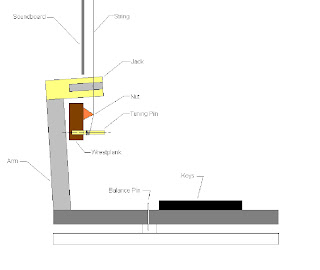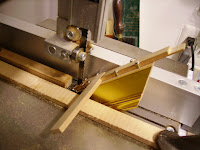My hobby is making (hopefully) beautiful and useful musical instruments from discarded materials, such as old furniture, picture frames, etc. Here's my other website
http://angelfire.com/folk/inventedinstruments/ .
All of my instruments cost nearly nothing to make, not counting the hot hide glue which I purchase--it's just far superior to any synthetic glues. I use mostly hand tools as I don't have a lot of room in an apartment. My workshop is the kitchen counter. This also means having to set up and take down every time I want to build something.
THE CLAVICYTHERIUM
A clavicytherium is an upright harpsichord such that the soundboard and strings face the player.

Mine will be a simple clavicytherium inspired by the oldest known harpsichord, the so-called Royal College of Music Clavicytherium of 1480.
Unlike the RCM clavicytherium, however, it will have one sound hole and will be strung in "gut", actually high carbon monofilament. So the similarities are minimal, other than the dimensions of the critical bits, like string speaking lengths.
This is being made entirely of found wood from the streets of Baltimore. {Hint: Bulk trash days for furniture}
I start by gluing up and then planing down pine boards for the keyrack.

Each key requires an integrated arm attached to a jack that will come in contact with the string when the key is depressed. Each jack will require a tongue escapement and a bird quill for plucking the string. There will be no damper as is the usual arrangement for harpsichord jacks. Thus, a sustain will be produced.

This integrated jack/arm/key lever arrangement makes for some awkward setup in terms of cutting out the tongue slot, but not that difficult, ultimately.
I cut out all the arms and jacks



Then I hide glue them at right angles using coffee stirrers (thanks, Starbucks!) as "go bars" while it sets up

The tongue slot requires a 45 degree angle to stop the tongue from flipping backwards, so several jigs were made, one for cutting out the slot on the band saw, one for "chipping" out the scrap piece of wood with a chisel, one for cutting the tongues, etc. If I were doing this for a living instead of just a hobby, I would make several permanent jigs for my main sellers...maybe in my retirement!


























